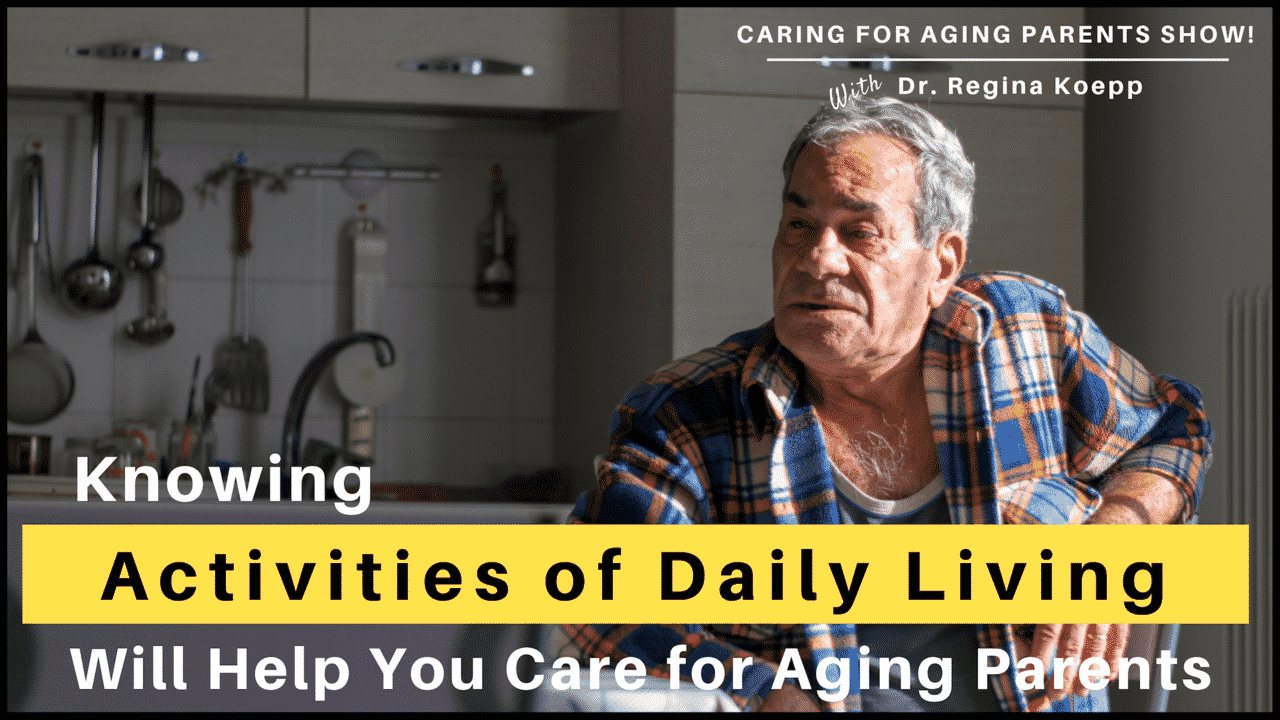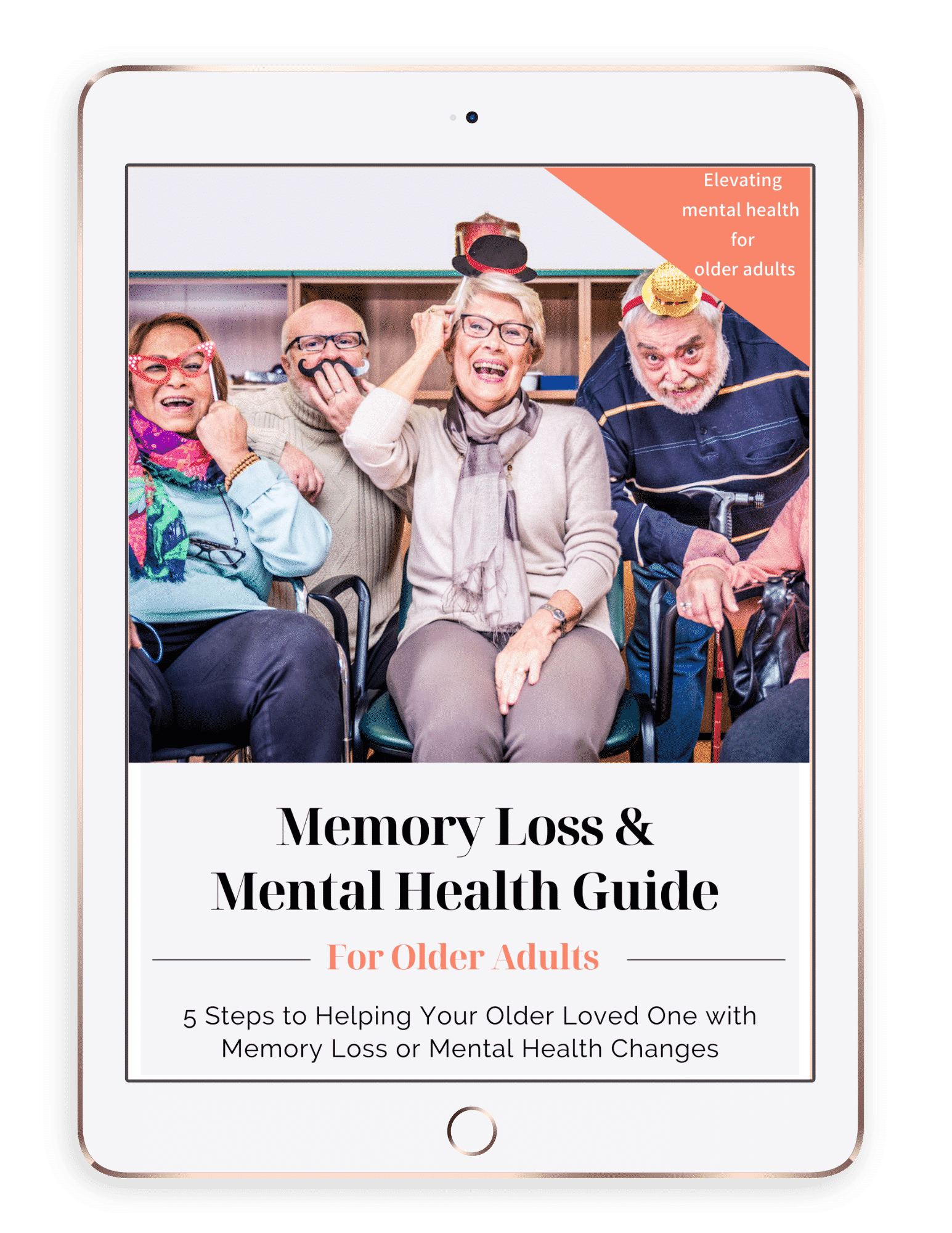Raise your hand if you’ve heard the term Activities of Daily Living, otherwise known as ADLs!
Now, raise your hand if you’ve heard of term Instrumental Activities of Daily Living, also known as IADLs!
Your hand is probably down. And that’s okay! At the end of this episode you are gonna be raising your hands high!
In today’s episode, I’m going to walk you through Activities of Daily Living, which I’ll call ADLs and Instrumental Activities of Daily Living, which I’ll call IADLs! And, I’ll also explain why it’s so important that you know what they are!
Because…
Knowing Activities of Daily Living Will Help You Care for Aging Parents!
So What Are Activities of Daily Living (ADLs)?
ADLs are basic life tasks that we learn when we are children and generally maintain independence with for most of our lives. They include:
- Bathing: Can your parent bathe or shower on their own? Meaning can they lather and rinse?
- Dressing: Can your parent dress on their own? Can they put their clothes on in the proper order?
- Toileting: Can your parent get to the bathroom and maintain cleanliness with wiping?
- Transferring: Can your parent move from sitting to standing on their own? Can they move from a chair to a bed on their own?
- Continence: Can your parent manage their bowel and bladder? Or, are they having accidents?
- Feeding: Can your parent bring food to their mouth, chew, and swallow?
As we think about each of these basic tasks, we think about how independent a person is with each of them. For example:
- Is your parent fully independent with these tasks?
- Does your parent need some assistance? If so, how much assistance?
- Does your parent need total assistance to manage these tasks?
What Are Instrumental Activities of Daily Living (IADLs)?
These are more complex tasks that require judgment and reasoning skills. These are often required for independent living! They include:
- Home maintenance & housework: Can your parent maintain a livable home environment? Can they wash dishes, do laundry, and keep their home tidy enough?
- Shopping & Cooking: Can your parent shop, go to the grocery store and prepare meals?
- Communication tasks like using the phone and managing the mail: Can your parent use the phone effectively or manage the mail effectively? Can they discern junk mail from important mail?
- Managing Money: Can your parent manage their finances, manage their banking, pay bills on time, etc?
- Managing Transportation: Can your parent drive, or use public transportation without getting lost or in unsafe situations?
- Managing Medications & Health Care Plans: Can your parent manage their own medications and understand the treatment plans their doctor’s give them?
Just like with ADLs, as we think about IADLs, we want to know how independent a person is with each of these tasks. Like:
- Is your parent fully independent?
- Does your parent need some assistance? If so, how much assistance?
- Does your parent need total assistance to manage these tasks?
Why Is Knowing ADLs and IADLs So important?
1. Helps You To Communicate With Providers
First of all, when you meet with medical and mental health providers, they’ll ask you at what level your loved one needs care with each of the tasks mentioned above, so it’s important for you to be paying attention to, and have a sense of, how much assistance your aging parent needs for each of these tasks.
2. Helps Providers to Clarify Diagnoses
ADLs and IADLs offer one piece of a large puzzle that clinicians look at to assist with diagnoses and to make recommendations. For example, When I’m asking about ADLs and IADLs, I am also asking WHY the person is having trouble? Is it a physical issue? a motivational issue? A cognitive issue? Knowing the reason WHY the person is having trouble helps me to clarify my diagnosis and make helpful recommendations.
3. Helps To Determine Recommendations for In Home Assistance and/or Senior Housing Recommendations
Being clear about a person’s ADLs and IADLs helps to determine what type of assistance they may need in their home if they plan to age in place, like do they only need help with meals at this time? Or do they need help with bathing and grooming? Or, are they in need of 24/7 supervision? On the other hand, if they plan to move to a senior living community, it helps to determine what level of care they may need. For example: Is independent living the best option? Assisted living? Memory care? Skilled nursing? You get the idea.
4. Helps Clinicians and Family Members Track Changes & Identify Next Steps
Having a sense of ADLs and IADLs helps clinicians and family members to anticipate changes and identify next steps in a disease process. It helps us to understand if the older adult is declining.
5. Helps You to Identify YOUR OWN NEEDS with caregiving!
Knowing ADLs and IADLs will help you as a caregiver to have a sense of when YOU will need more support in caregiving. Let me explain, we know that the more assistance an older adult needs with ADLs (the basic tasks like toileting, bathing, and transferring) the greater the physical toll on the caregiver and the more support you are going to need.
I hope this blog and video were helpful in explaining ADLs, IADLS, and why they are so darn important!
Lots of love to you and your family!
Dr. Regina Koepp



